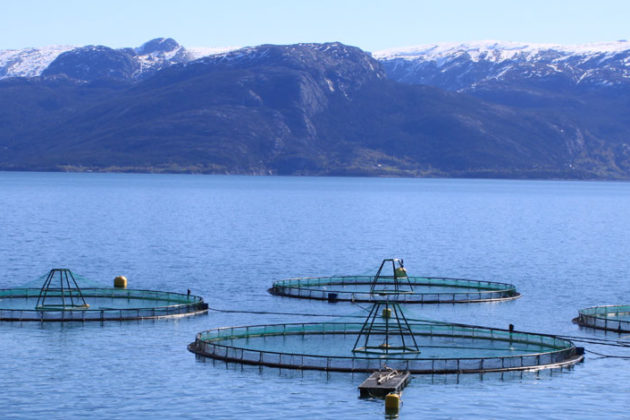NOK 8.5 billion in purchases in Western Norway

Aquaculture in Rogaland and Hordaland purchased goods and services for approximately NOK 9.45 billion in 2013. 90% of this was used in Western Norway, according to an analysis of ripple effects carried out by the food research institute Nofima. This confirms that the industry has a large regional effect.
The scientists have surveyed the extent of activity in the aquaculture industry in the two counties in Western Norway, and investigated the ripple effects of the industry. An important part of the ripple effects is the activity that is created when the aquaculture industry purchases goods and services.
“In the past 10-15 years we have seen a development in the aquaculture industry in which subcontractors take over an increasing number of tasks. This has led to growth among suppliers. Service companies have appeared along the complete coastline, but this type of service is delivered to a very large degree by local suppliers,” says Senior Scientist Roy Robertsen of Nofima.
Purchases in Rogaland and Hordaland constitute approximately NOK 3.4 million per employee in the aquaculture industry.
“An important reason for the growth in recent years has been the increase in problems with salmon lice, and an increased need to take on personnel and equipment to aid with delousing. Most companies today use subcontracted boats and personnel in addition to their own employees during delousing. Other types of task that are subcontracted out are net cleaning, mooring, the moving of facilities, exchange of nets, etc.” says scientist Audun Iversen of Nofima.
Another consequence of the problems with lice is that the aquaculture companies are investing to a greater degree in prevention. This involves the purchase of wrasse, lumpfish, shielding skirts, etc.
“Suppliers are behind much of the innovation in an industry that has had an explosive technological development. We are seeing larger units and more automation. A great deal of research is being carried out also on feed, breeding, vaccines and medicines. Equipment is being developed to monitor and feed the fish, and much work is being done on improving equipment to give not only a more efficient working day, but also a safer one,” says Iversen.
2800 Full-time equivalent years
The scientists have calculated that the aquaculture industry amounts to 2,798 full-time equivalent years (abbreviated as “FTEs”) in the two counties. This figure includes employees working with young fish, food-grade fish, slaughter/processing and export. Employees of companies that supply the aquaculture industry are not included.
Slaughter and processing employ the most people, and municipalities in which such facilities are located thus have most employees.
Hordaland
Hordaland is the second-largest aquaculture county in Norway and has been dominant in the industry since its beginning more than 40 years ago. The calculations show that the aquaculture industry now accounts for 2,218 FTEs in Hordaland, nearly four times as many as in Rogaland.
Slaughter and processing activities together have the largest number of employees in Hordaland, with 1,226 FTEs. This is followed by aquaculture operations, with 704 FTEs.
Ten municipalities in Hordaland each have more than 50 FTEs within the aquaculture industry. The 10 largest account for nearly 86% of employment, with a total of 1,926 FTEs.
Bergen municipality is the largest employer, with 467 FTEs. This is mainly because several of the largest global actors within aquaculture have their head offices here.
Bømlo municipality has 339 FTEs, which comes mainly from the slaughter and processing activities of several companies.
Sund, Fjell and Kvinnherad are also important municipalities in the processing of aquaculture products. Austevoll, Kvinnherad and Sund are the most important municipalities in aquaculture itself, while Bergen is a centre for administration and sales.
Tysnes and Fusa are important municipalities in the management of young fish.
Rogaland
Rogaland is a county with a moderately sized aquaculture industry, which is principally located in its central and northern parts.
The aquaculture industry accounts for 573 FTEs in the county, distributed among 18 municipalities. The six largest correspond to 86% of employment.
Hjelmeland is the largest by far, with 176 FTEs. This is due to the slaughter and processing activities in the municipality.
Stavanger has over 100 FTEs, much of this due to the Skretting Aquaculture Research Center. Finnøy has 80 FTEs in slaughter and aquaculture activities.
Gjesdal has 50 FTEs associated with the EWOS research facility.
Facts
- The aquaculture industry in Hordaland and Rogaland constituted 21% of production in Norway in 2014, measured by value.
- The report has been commissioned by the Norwegian Seafood Federation (Sjømat Norge Havbruk Vest). Hordaland County Council has contributed funding to the project.
Contact person
Research areas
Economy and profitability
Topics
Ripple effects
